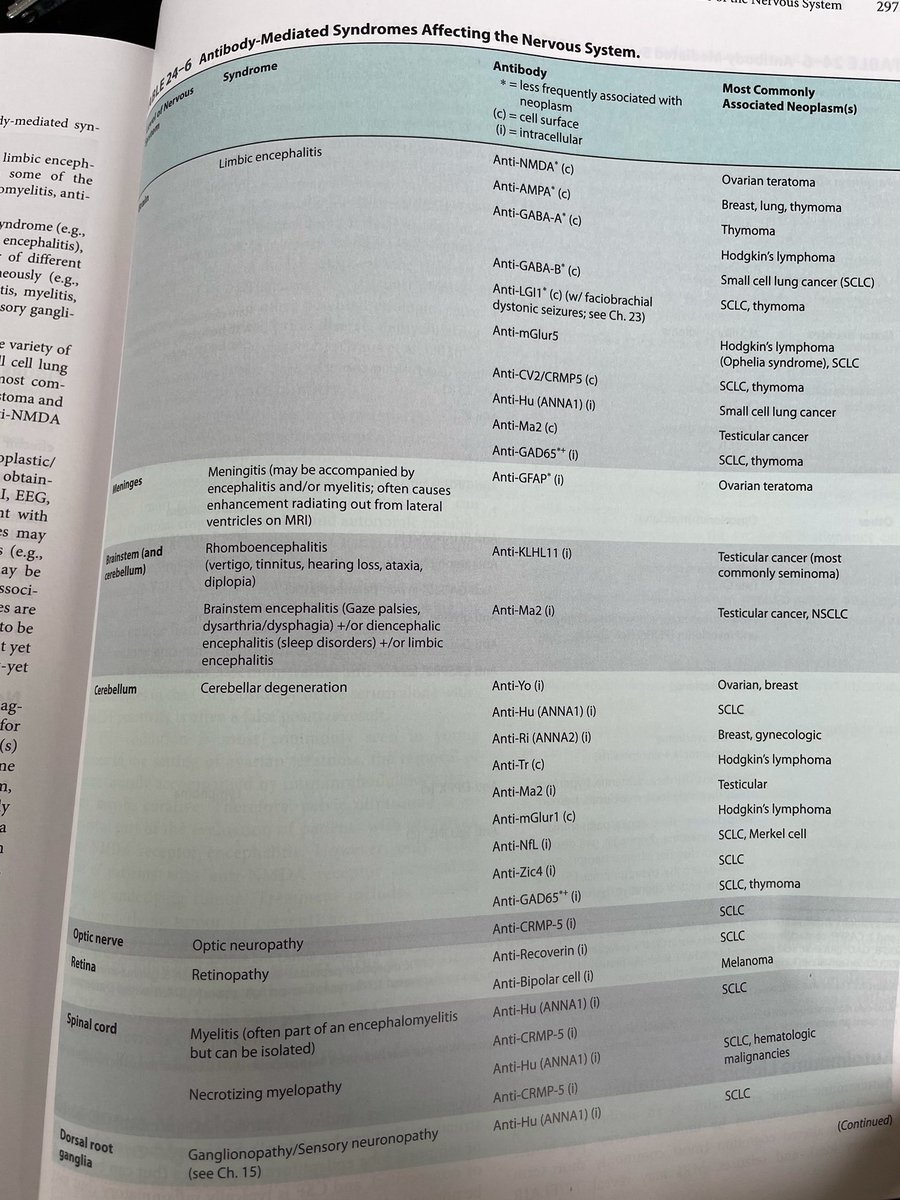It's here! After many years of working on this 2nd edition, it's amazing to finally see and hold it!
I learned so much revising and updating this book, a 🧵
#MedEd #MedTwitter #neurotwitter #NeuroTwitterNetwork @NMatch2023 @caseyalbin @DxRxEdu
I learned so much revising and updating this book, a 🧵
#MedEd #MedTwitter #neurotwitter #NeuroTwitterNetwork @NMatch2023 @caseyalbin @DxRxEdu

One of the most fun things to write was the preface, reflecting on how much has changed and evolved in #neurology in just a few years since the 1st edition. More on why I love neurology here: 
https://twitter.com/AaronLBerkowitz/status/1492990274368258054

The autoantibody table has gone from 1 page to 2 and I'm sure is already out of date as this field rapidly evolves
@StaceyLClardy

@StaceyLClardy


And there are of course countless updates and expansions in stroke, movement disorders, headache, and every area of neurology...
And I also got the opportunity to work with an amazing artist Dragonfly Media group to develop new neuroanatomy figures. Here are some of my favorites:
And I also got the opportunity to work with an amazing artist Dragonfly Media group to develop new neuroanatomy figures. Here are some of my favorites:
What actually crosses in the chiasm and why?
(here's an explanation:
(here's an explanation:
https://twitter.com/AaronLBerkowitz/status/1266749692576055296)

How does the MLF yoke horizontal eye movements?
(more on that here:
(more on that here:
https://twitter.com/AaronLBerkowitz/status/1272306852940800000)

How to understand the direct/indirect basal ganglia pathways?
(more on that here:
(more on that here:
https://twitter.com/AaronLBerkowitz/status/1286007105858596864)

I'm excited to share this book with you and hear your feedback! 🧠♥️ The book is always freely available on AccessMedicine through a university digital subscription. Otherwise, it is available here in print and kindle versions amazon.com/Clinical-Neuro…
• • •
Missing some Tweet in this thread? You can try to
force a refresh









